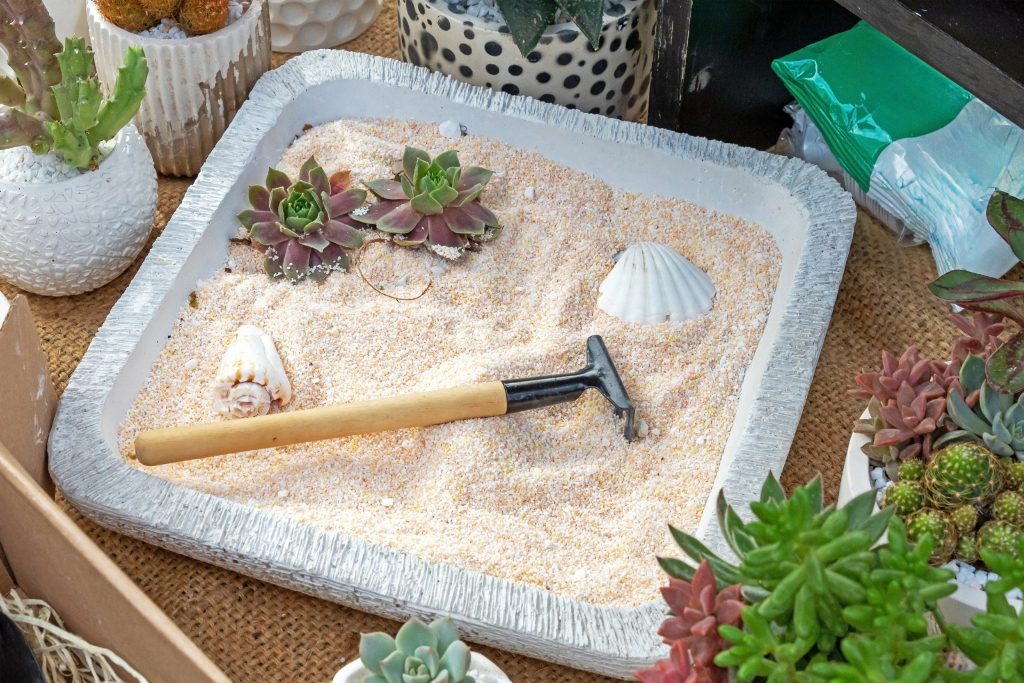How to Create an Indoor Zen Garden
It’s no secret that Texas heat is the real deal, and when the high temperatures and blistering sun strikes, the last thing you want to do is tend to your outdoor garden. Luckily, indoor Zen gardens are the perfect activity to keep you cool, calm, and collected.
A traditional Japanese Zen garden, also known as a karesansui, is a minimalist, dry landscape primarily composed of natural elements like rock, sand, gravel, wood, and a few plants. The dry garden may also include small, human-made components like miniature bridges, lanterns, and statues.
A primary focus of Zen gardens is the sand, which is meant to be raked in patterns and ripples, symbolizing waves. The granules also represent a simplistic, yet raw, environment, which encapsulates a calm, meditative, and controlled setting. As a result, Zen gardens are often used to facilitate serene peace, thanks to the minimalist and natural elements.
Plus, since the main components of Zen gardens are hardscaping, they make for a low-maintenance decorative addition to your home.
Materials
Less is more when it comes to indoor Zen gardens, so embrace simplicity and focus on the following natural elements:
- Pebbles
- Rocks or stones
- Sand
- Gravel
- Wood
- Small plants that require little to no water (e.g., succulents, cacti, or moss)
- Miniature figurines (e.g., stone or wood bridges, lanterns, or statues)

How to Create an Indoor Zen Garden
1. Choose the Right Space
Choose a quiet, peaceful, well-lit area in your home to keep your Zen garden. A porch, spare room, out-of-the-way corner, or flat side table is perfect.
2. Select A Container
Zen gardens can be any shape or size, so choose a container you love, such as a ceramic pot, wooden tray, or shallow stone bowl.
3. Determine A Design
If you’re a planner, sketch a rough design of your Zen garden, and if you prefer to create intuitively, experiment with different materials, configurations, and looks. Just remember to consider the scale and size of your container.
4. Create the Landscape
Begin by arranging your larger rocks, stones, and statues in your desired container. Play around with different shapes and sizes to add depth. The great things about Zen gardens are that nothing is permanent! You can adjust the design and materials at any point to create a new landscape and feel.
5. Add Sand or Gravel
Add sand or gravel around your larger rocks and create patterns or designs using a small rake, fork, or stick.
6. Incorporate Plants
Consider adding small, easy-to-maintain plants like succulents, mini cacti, or moss for a pop of color.
7. Enjoy
Remember that an indoor Zen garden should be simple, personalized, and uncluttered to promote a calm, relaxed, minimalist sanctuary. Zen garden maintenance is minimal: Regularly rake the sand or gravel to maintain serenity, water plants as necessary, and remove dust and debris.
For more indoor gardening inspiration, look no further than our guide to container gardening.
© 2024 Texas Farm Bureau Insurance



